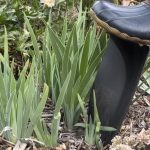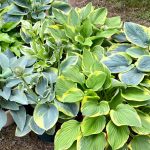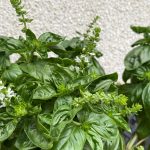Ever wondered what one of the golden tickets is to decrease your gardening workload and be great for your garden at the same time? Using Mulch in your garden is one of the answers! Mulch is the single most effective way to help manage the health of your garden, as well as your time in the garden.
Lean in as I define what mulch is, the different types of mulch available, the benefits of mulching your gardens, and how to use mulch in your garden.
What is Mulch?

Mulch is a protective layer of covering material that is placed on the surface of soil and spread around the base of plants.
Mulch can be used in vegetable gardens, flower gardens, raised garden beds, and in container plantings with the intent of benefitting the plants and the gardens they cover. Mulch provides a barrier between the soil and the elements like sun, wind, and rain.
Let’s delve into the advantages of using mulch in a garden.
The Benefits of Mulch
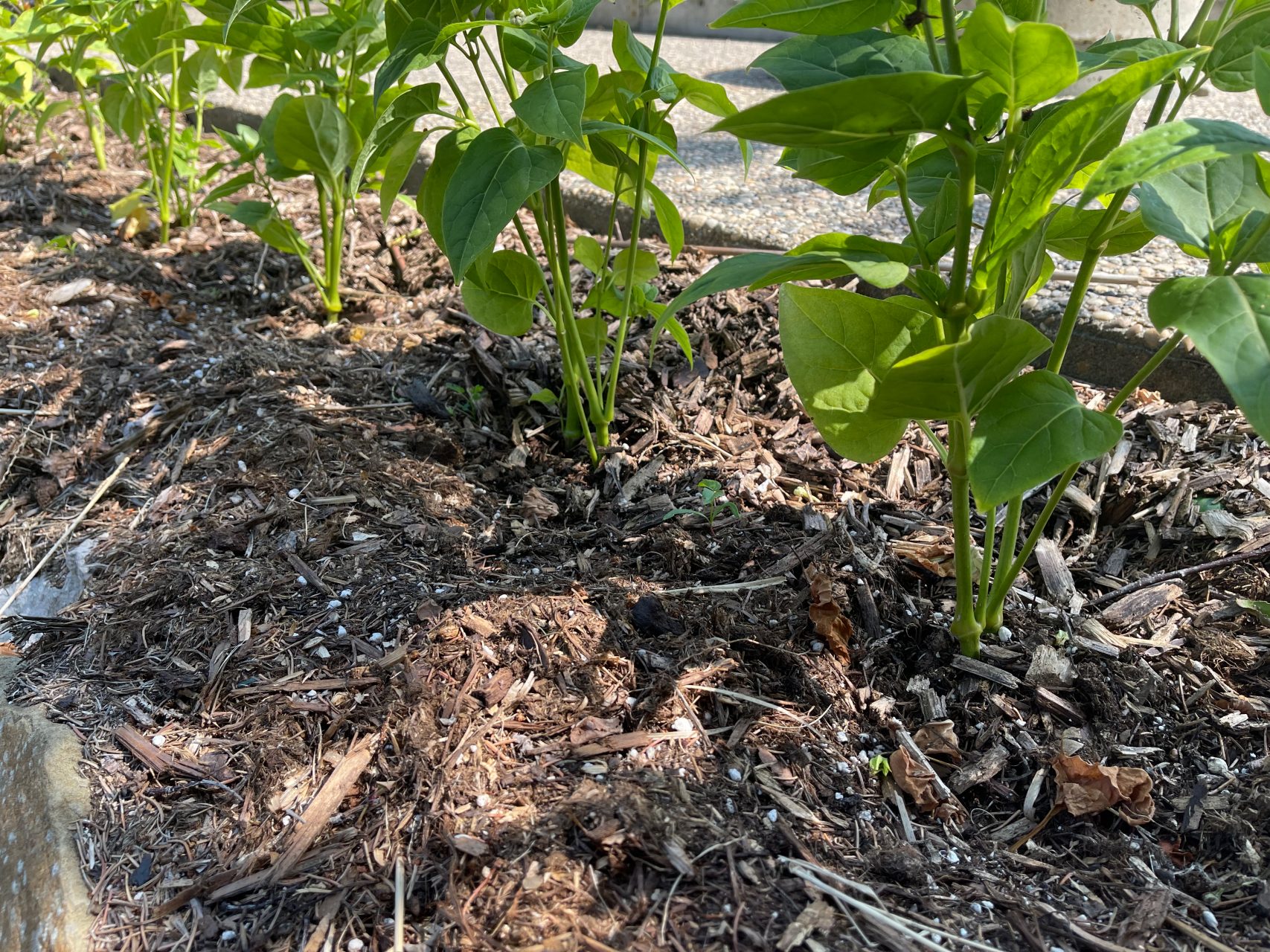
Here’s where we discuss the magical part of mulch. Not only will mulch improve the quality of your garden, but it improves the quality of your life! Mulch reduces workload and energy output like a boss!
Mulch is the one of the things that keeps me from being overwhelmed with my gardens.
Here’s what mulch does for a garden:
- Mulch enriches and improves soil fertility.
- Mulch prevents erosion by deflecting water and wind damage.
- Mulch reduces water evaporation and conserves soil moisture.
- Mulch insulates the soil from hot summer temperatures and freezing winter temperatures.
- Mulch reduces weed growth by impeding light penetration and soil access to weeds.
- Mulch plays a role in improving the balance of beneficial soil nematodes.
- Mulch keeps low growing fruit, like strawberries, clean as they mature.
- And, through all this, mulch reduces gardening workload.
Types of Mulch
There are several different mulches available to the home gardener. They are divided into 2 broad categories: organic or inorganic.
Organic Mulch
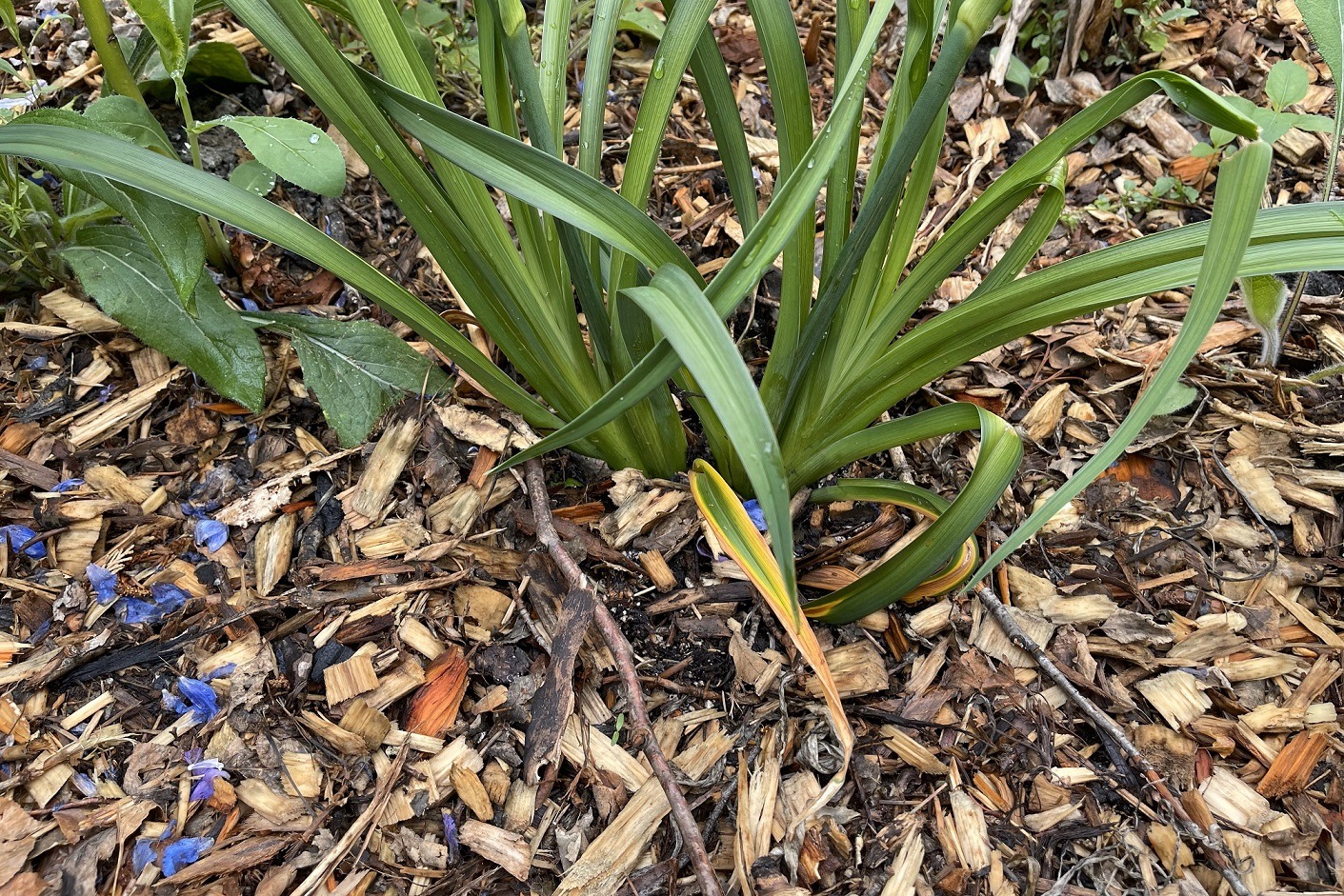
This kind of mulch occurs naturally in nature and breaks down over time. The most common types of organic mulch are bark and wood mulches.
Organic mulches are the best and most highly recommended for home garden use. There doesn’t appear to be much difference as to how the particular types perform, but the appeal to a distinct mulch centers more around its aesthetics.
Organic mulches can have one single component, like cedar wood or bark mulch; or it can be mixed, meaning that it is a blend of various types of trees and shrubs.
Mixed mulches are often offered for free by tree services or community recycle centers, whereas single types of mulch like cedar mulch, generally have to be purchased.
In addition to wood and bark mulches, other kinds of organic mulch include:
- Fresh Grass Clippings – these are a good option as they add nitrogen and potassium to the soil. Keep the layers thin, 2.5-5.0 (1-2″) at a time, and use dry clippings for the best results. If the layers are too thick they can block air circulation and water penetration into the soil.
- Leaves – shredded leaves work well as a mulch for gardens. Shredding is important because a layer composed of big leaves can block air and water from permeating into the ground.
- Straw – straw is not recommended as a mulch, but is more useful as a plant insulator for winter protection. With straw, there could be a risk of herbicide contamination.
- Newspaper & Cardboard – ink colours or coated cardboard can have unhealthy dyes or additives, so look for unprinted & uncoated sources.
Inorganic Mulches

Inorganic mulches don’t break down. Some naturally occur in nature, like rock and stone, but others are industrial byproducts. I don’t recommend them for home garden use.
Here is a quick rundown on organic mulch options:
- Rock or Stone Mulch – rock and stone mulches aren’t effective at retaining moisture, and they can create heat stress to tree, shrub, annual, and perennial roots. The roots of most plants grow in the top 25 cm of the soil and as the rocks and stones collect heat from the sun, they pass this heat to the roots and wind up baking them. Rock mulches appear to be fuss and maintenance free, but they are difficult to weed. Weeds often get intertwined deeply in the rocks and are hard to get out.
- Landscape Fabric or Plastic – some landscape fabric is breathable, but plastic is not and can negatively impact the plants. Landscape fabric works well if it is with an organic mulch for curb appeal.
- Rubber – ground up rubber bits are good for playgrounds because it’s so durable…; however, rubber by-products can get filtered into the soil and can be toxic to plant growth, and rubber mulches, like rock mulches, get hot and have a negative impact on roots.
How Much Mulch Should You Use?
So how much mulch is enough? With mulch, a little goes a long way for a good while.
For flower beds, vegetable gardens, raised beds, and perennial gardens, place a layer of the organic mulch of your choice 5-7.5 cm (2-3″) thick around the bases of your plants.
Be careful to not pack the mulch too closely or too tightly, or too high against the plant’s stems because it could cause too much moisture to develop around the stem and it could rot.
Mulch the bare areas of the garden between the annuals and perennials for maximum water retention, erosion prevention, insulation, fertility, and weed control.
With woody perennials like trees and shrubs, create a donut-like shape around their bases but not allowing mulch to touch the trunks. When the trunks and main stems of shrubs stay too wet, it weakens the bark and allows pests to attack that area of the trunk. This then weakens them and can eventually cause them to die.
Reapply mulch every 2-3 years as it eventually decomposes and breaks down. Remember that you don’t have to do the entire garden all at one time. You could set up a system to re-mulch different parts of your garden each year instead of doing the whole thing.
Using Mulch in Hanging Baskets and Planted Containers

In addition to perennial beds, annuals, and my raised bed gardens, I like to use mulch in hanging baskets and planted containers. I find that with a little layer of mulch (even as little as 2.5 cm), it keeps the roots cooler and reduces the watering requirements.
For hanging baskets, I apply about 2.5 cm (1″) to the top of the soil throughout the basket. I lift the foliage at the base of the plants and gently tuck the mulch in.
To planters, I apply a little thicker layer of mulch, more like 3 cm (1.5″) and find that it keeps divots from developing in the soil at the top of the container by deflecting the water as it comes out of the hose or watering can.
Summing Up Mulch
The addition of a protective layer of organic mulch in flower, vegetable, perennial, raised garden beds, hanging baskets and containers improves growing conditions for plant material and reduces workload for any gardener.
Consider giving Mulch a try and experiencing the Magic of Mulch for yourself!
©Sharon Wallish Murphy, ©Gardening with Sharon

















